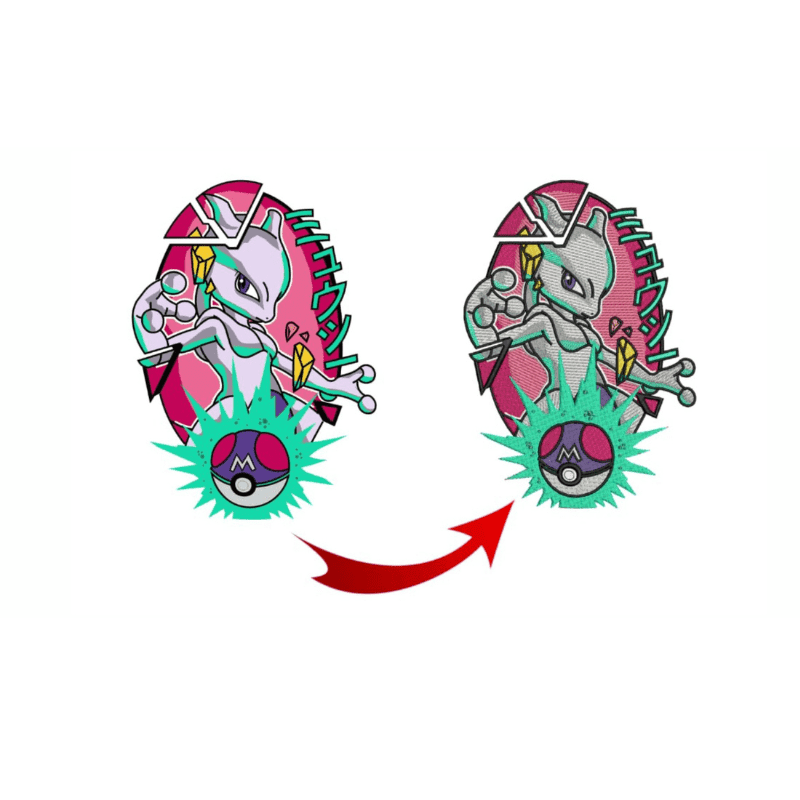Dependable Digitizing for Embroidery: Relied On by Professionals
Dependable Digitizing for Embroidery: Relied On by Professionals
Blog Article
Grasping the Needlework Digitizing Refine: Your Ultimate Guide
Embroidery digitizing is a careful craft that requires precision and knowledge to translate detailed designs into digital formats for device needlework. As artisans start this trip to understand the embroidery digitizing procedure, a comprehensive understanding of the basics establishes the foundation for excellence. Nevertheless, beyond the rudimentary knowledge exists a realm of innovative software, specialized devices, and nuanced methods waiting to be checked out. By diving right into the subtleties of digitizing, one can open a world of innovative opportunities and raise their needlework projects to new elevations.

Comprehending Needlework Digitizing Essentials
Embroidery digitizing fundamentals form the structure whereupon intricate layouts are equated right into machine-readable layouts for precise sewing. This preliminary action in the embroidery digitizing process is vital for guaranteeing that the last stitched product is a loyal depiction of the original layout. Recognizing embroidery digitizing fundamentals entails understanding essential principles such as stitch kinds, stitch direction, density, padding, and draw settlement.
Sew kinds play an important role in establishing the visual and textural result of the embroidered layout. By picking the appropriate stitch type, whether it be satin, fill, or running stitch, digitizers can achieve the desired impact and boost the general top quality of the embroidery. In addition, sew instructions influences the circulation and dimension of the layout, while thickness establishes the spacing and protection of the stitches.
Moreover, rug stitching gives security to the layout by safeguarding the material and protecting against distortion throughout the needlework procedure. Draw settlement is another essential factor to consider to combat the natural tendency of textile to agreement when sewn. Grasping these embroidery digitizing essentials is essential for producing professional-quality stitched items.
Picking the Right Digitizing Software
Choosing the appropriate digitizing software program is a critical decision that considerably influences the performance and high quality of the needlework digitizing procedure. Digitizing for Embroidery. When selecting the best digitizing software program, it is necessary to consider variables such as the intricacy of designs you plan to create, the user-friendliness of the software you can try here application, the degree of customer support offered, and the compatibility with your embroidery equipment
There are various digitizing software application options readily available in the market, varying from standard programs for beginners to advanced software program for specialist digitizers. Some preferred options include Wilcom EmbroideryStudio, Hatch Embroidery Software, and PulseID. These software provide a vast range of devices and features to help you develop detailed layouts effortlessly.
Prior to choosing, it is suggested to check out the various software program options via complimentary trials or demos to establish which one ideal fits your requirements. Furthermore, reading testimonials and seeking suggestions from seasoned digitizers can offer beneficial insights right into the staminas and weak points of each software application bundle (Digitizing for Embroidery). By carefully reviewing your demands and comparing the functions of various digitizing software, you can make an informed choice that improves your embroidery digitizing workflow
Digitizing Devices and Methods

Optimizing Style Settings for Needlework
Grasping the complexities of style setups is fundamental in accomplishing ideal results in the needlework digitizing procedure, structure upon the foundation Learn More laid by recognizing digitizing devices and strategies. When enhancing design settings for embroidery, it is necessary to think about variables such as stitch kind, thickness, rug, draw payment, and enrollment. Registration setups align various aspects of the design properly, preserving total additional resources design stability.

Troubleshooting Common Digitizing Issues
When experiencing common digitizing problems throughout the embroidery process, it is important to recognize the origin and apply effective services quickly. One usual problem is stitch density issues, where stitches might be also thick, creating the material to tighten, or also sparse, causing gaps in the design. Changing the stitch thickness settings in the digitizing software program can aid solve this problem.
Another frequent difficulty is string breaks throughout the embroidery process. This can occur due to various factors such as wrong stress setups, boring needles, or making use of low-quality thread. Making sure correct maintenance of the needlework machine, including regular needle modifications and tension changes, can decrease the occurrence of string breaks.
Furthermore, style registration errors can result in misaligned aspects within the needlework style. Examining the style placement in the digitizing software and making necessary adjustments before sewing can help in preventing this concern. By attending to these usual digitizing problems immediately and successfully, you can make sure a smoother embroidery procedure and premium finished products.
Verdict
In conclusion, grasping the embroidery digitizing process calls for a solid understanding of the essentials, the ideal choice of software, and knowledge of devices and techniques. Enhancing design setups and repairing usual digitizing problems are critical steps in making certain top notch embroidery outcomes. By complying with these steps faithfully, one can achieve accuracy and effectiveness in the digitizing procedure.
Report this page